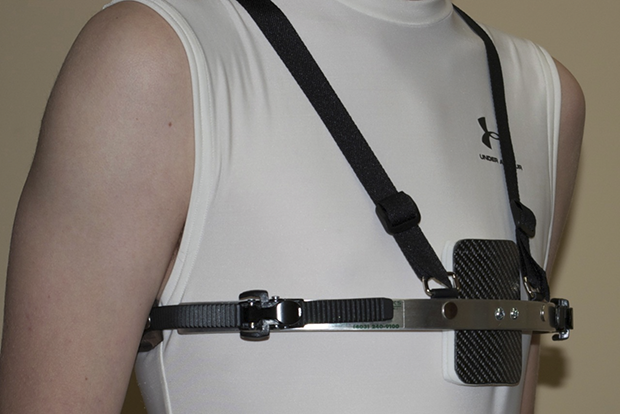10-year study shows brace treatment is best for Pectus carinatum
Surgery was the top treatment choice for pectus carinatum, but a long-running study indicates that using a brace is the choice for better outcomes.
Marian Freedman, Jon Matthew Farber MD, Contemporary Pediatrics, April 2, 2021
Brace treatment, not surgery, is the therapy of choice for pectus carinatum (PC), according to the results of a 10- year study.
After initial examination and classification of the PC deformity, most of which were of the chondrogladiolar type, 430 patients were treated with a staged management protocol (bracing first, when possible, followed by surgery if bracing failed), while the other 265 patients were observed. The 365 patients who were amenable to bracing and had appropriate deformities for this protocol were measured for an Argentine brace and fitted at a clinical visit.
Clinicians told patients that bracing therapy, with a minimum daily duration of 8 hours, could last for 12 months or longer. Patients were followed up monthly to verify bracing compliance and measure the pressure of correction, and then every 3 to 6 months until investigators observed sternal flattening. At this point, patients wore the brace for progressively fewer hours until the bracing was discontinued.
Following brace treatment, patients were assigned to 1 of 3 groups based on outcome: successfully completed therapy, dropout, or brace failure. Bracing was successful in most patients who were compliant, although the degree of success was negatively affected by a large number of dropouts.
Patients in whom bracing therapy was not successful (about 21%), or whose deformity was overcorrected, underwent one of several types of surgery: traditional open repair (67%), the Abramson repair (25%), or Nuss procedure (8%). Open repair entailed segmental costal cartilage resection and sternal osteotomy using a reciprocating saw and osteotome.
Initial results were good for all operations. However, 13% of patients who underwent the Abramson operation experienced recurrence compared with none after the open operation. In addition, the Abramson operation, used primarily in patients with a flexible chest wall, was successful in remodeling the chest wall but complication rates were high compared with the open operation, which resulted only in a single wound infection that was treated successfully with antibiotics.
| Thoughts from Dr. Farber |
When I first started out, surgery was the only treatment option for this condition. It is good to see that bracing can be quite successful. I also note that, for now at least, this is one area where an open procedure still seems to be better than a laparoscopic one; if your surgical colleague recommends otherwise, explore why with him or her.
Source Contemporary Pediatrics
| References |
Ten-year experience with staged management of pectus carinatum: Results and lessons learned, Edward KR, Obermeyer RJ, Goretsky MJ, Kuhn MA, McGuire MM, Duke DS, Pallera HK, Frantz FW J Pediatr Surg. 2021 Oct;56(10):1835-1840. doi: 10.1016/j.jpedsurg.2021.01.027. Epub 2021 Jan 27.
| Further reading |
Modeling of the chest wall response to prolonged bracing in pectus carinatum, Sargent B, Varela K, Eggett D, McKenna E, Bates C, Brown R, Garcia V, Howell L. PLoS One. 2023 Aug 14;18(8):e0288941. doi: 10.1371/journal.pone.0288941. Full text
Orthotic Bracing or Minimally Invasive Surgery? A Summary of 767 Pectus Carinatum Cases for 9 Years, Shang Z, Hong C, Duan X, Li X, Si Y. Biomed Res Int. 2021 Feb 19;2021:6942329. doi: 10.1155/2021/6942329. Full text

